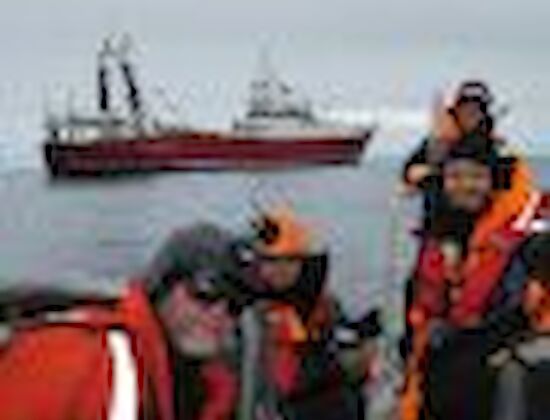After dinner whale anyone?
The pattern of after dinner whales is continuing, with the giants often cruising by late in the evening. We achieved a further four blue whale IDs, plus one blue and three humpback biopsies over the weekend. Unfortunately some of the whales we have been tracking have eluded us, shrouding themselves in the thick fog and ducking into the pack ice. While the acoustics team can maintain reasonably good tracking on the blue whales in ice-strewn areas, it is not practical to operate the ship or the small boat Remora in anything more than open or scattered pack ice (i.e. less than 10-20% coverage.)
With less than a week to go in Antarctic waters we called a science planning meeting to decide our priorities for the precious time we have left. The general consensus is that we continue to work hard to increase our sample size, i.e. do more tracking, photographing and biopsy sampling of the whales. We will continue west along the ice edge in order to gain the maximum time on task south of 60 South. This will also get as close as possible to the longitude of New Zealand, giving us the shortest distance to sail back to Nelson.
On board the Explorer we have a veritable United Nations of scientists with people from Australia (which is funding the voyage), Chile, New Zealand, United Kingdom and United States, speaking six languages and spanning three decades in age. Most of us are recidivists, with many Antarctic expeditions behind us. Our expertise covers all aspects of cetacean research including acoustics, engineering, genetics, tagging, animal ethics, image processing, photography and data analysis. There are more women than men on board – something I never imagined would happen within my lifetime. In my early career I was more often than not the lone female on the research voyage. The thing which binds and drives us all is a shared passion for understanding the Antarctic blue whales, something we are gradually achieving throughout this voyage.



